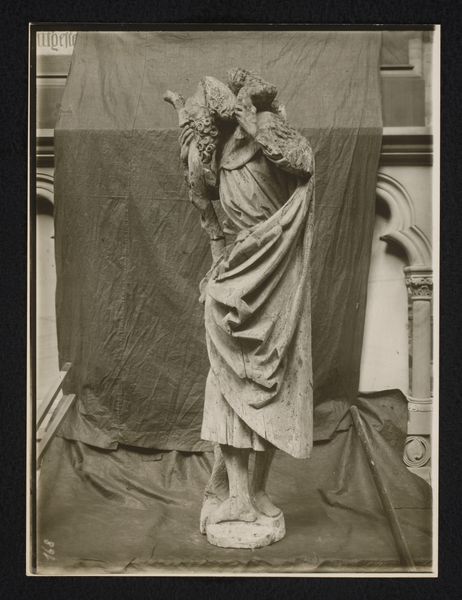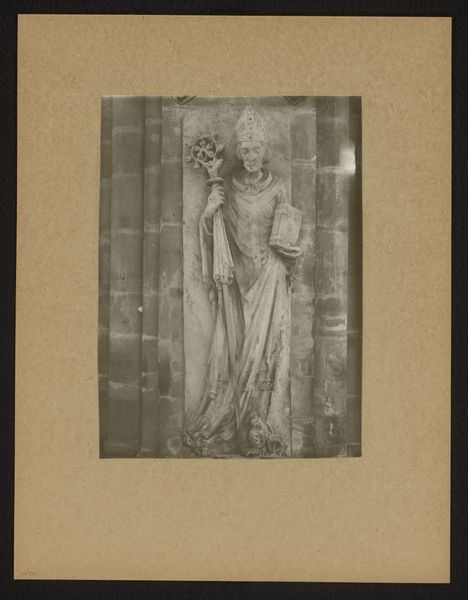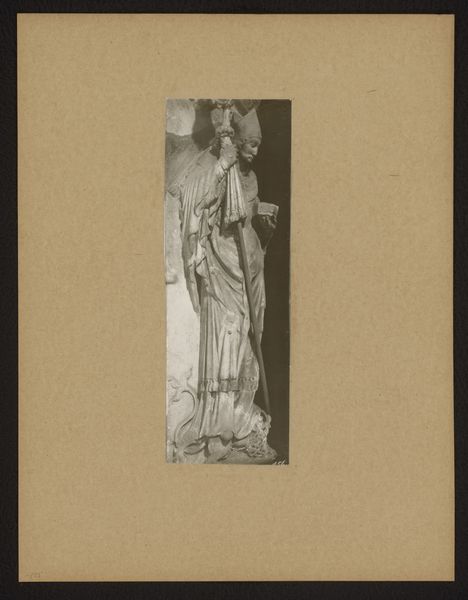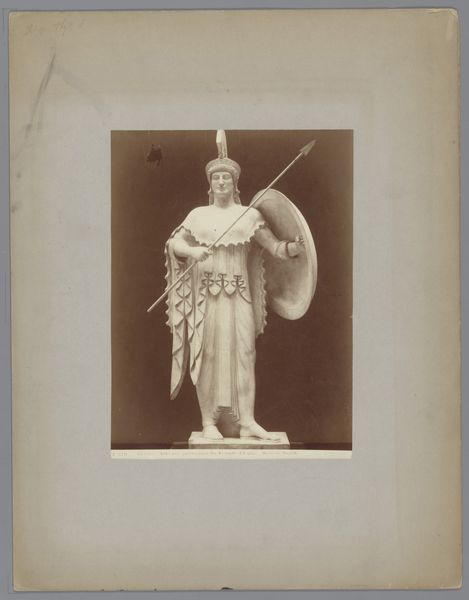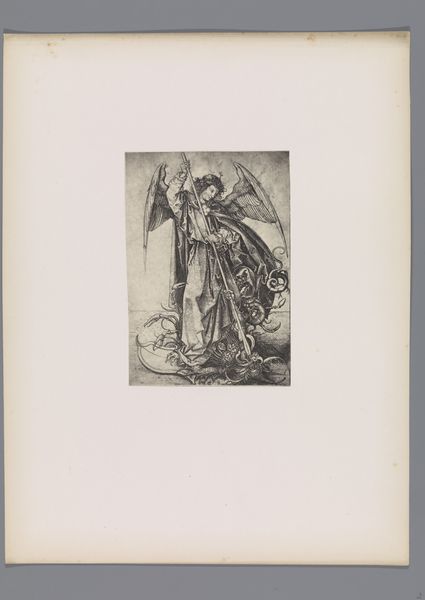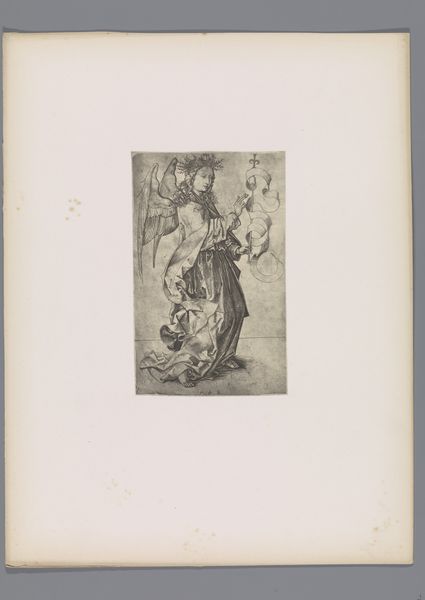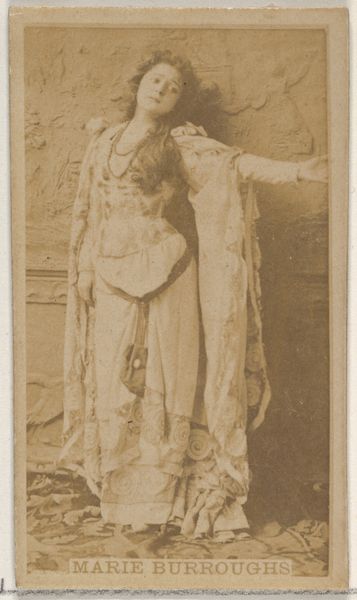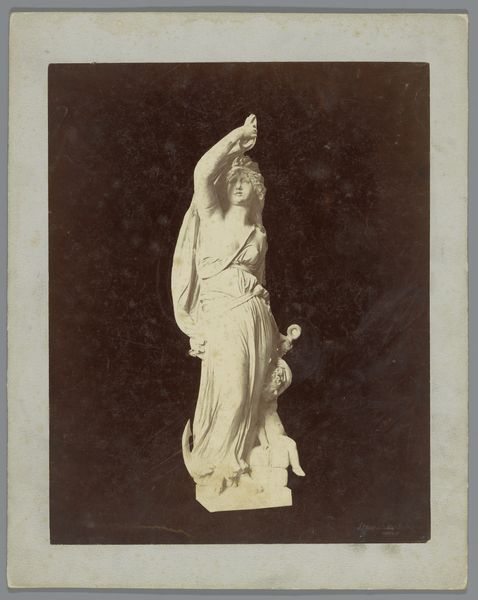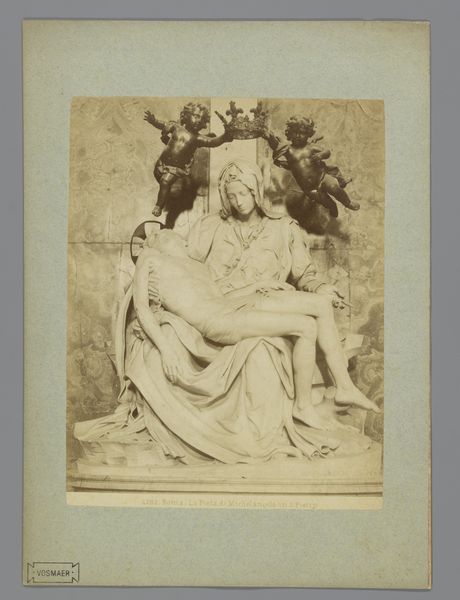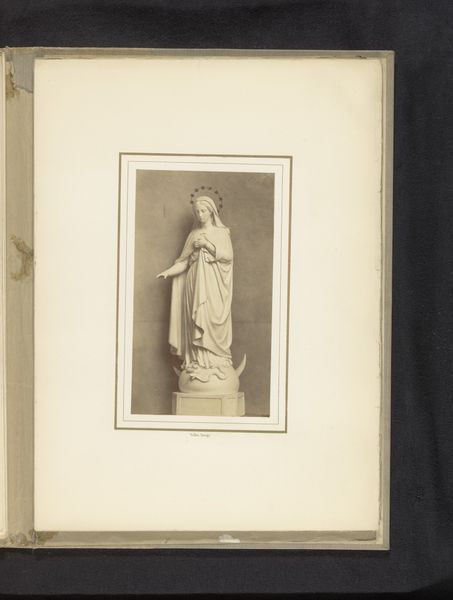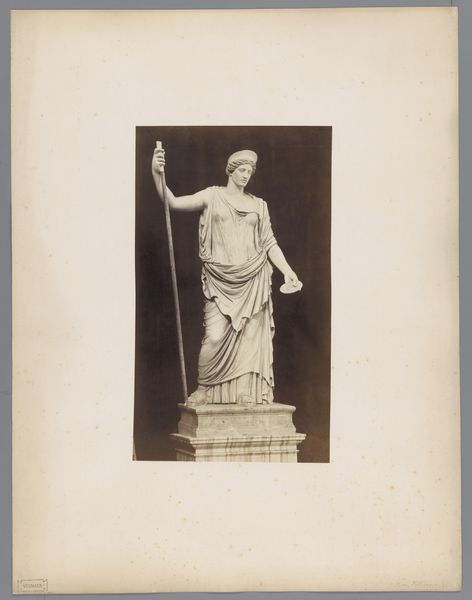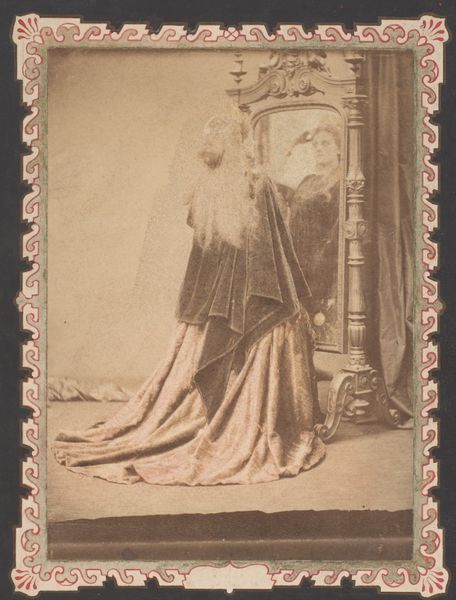
photography, sculpture, wood
#
portrait
#
medieval
#
sculpture
#
figuration
#
photography
#
sculpture
#
wood
#
tonal art
Dimensions: height 231 mm, width 171 mm
Copyright: Rijks Museum: Open Domain
Editor: Here we have a photograph of a wooden sculpture entitled "Houten beeld van Christoffel van Lycië in de dom van Bamberg," dating from around 1900 to 1920. The figure depicted seems powerful, yet weary, like they've undertaken a long journey. How do you interpret this work? Curator: It's interesting how you perceive weariness. The sculpture of Saint Christopher, bearing the Christ Child, carries immense symbolic weight. Consider the historical context: depictions of Christopher often emerged during times of plague and uncertainty. What power dynamics might be at play in the depiction of a saint carrying a child on his shoulders? How might this reflect anxieties about societal burdens? Editor: So you're saying it's not just a religious figure, but a reflection of the anxieties of the time? Curator: Precisely. The scale of the figure suggests authority, but it also underlines the weight of responsibility. We need to remember the intersectionality of faith and the lives of the people at the time this sculpture was installed. Christopher literally carries the hope for a better world, a world without plague or pain. Do you think this resonates today? Editor: It does, especially when we consider the disproportionate burdens placed on marginalized communities during crises. The image of carrying a weight, be it literal or symbolic, speaks volumes. Curator: Exactly! Art can often become a platform to address ongoing themes of historical power and struggles of humanity through generations. Editor: I had never considered Saint Christopher in this light before. I now see more complexity that will change my understanding of religious art and iconography moving forward. Curator: I'm glad it provided new context for understanding art as a reflection of history!
Comments
No comments
Be the first to comment and join the conversation on the ultimate creative platform.
